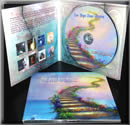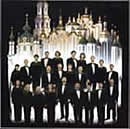Two Steps From Heaven

Classical Crossover

Sacred Choral Music
by Kiev Chamber Choir

Video:
Ukrainian Folk Music
Free Dog Clipart

Classical Crossover

Sacred Choral Music
by Kiev Chamber Choir

Video:
Ukrainian Folk Music
Free Dog Clipart
Russian Orthodox Church Sacred Choral Music on Amazon
ALL ABOUT
AVE MARIA LYRICS
Celine Dion: What Does She Sing?
MOBILE WEBSITE
 DOWNLOAD THIS SONG FOR FREE You won't find this song anywhere on the Internet. CHAPTER 5 : The Home Studio Microphone Guide Types of Mics: - Condencer microphone - Rybon microphone - Dynamic microphones Pickup Patterns Mic Picks for the Home Studio Affter the instrument and the player, the microphone is arguably the most important element in the recording chain, as the microphone and your mic placement techniques are the means of capturing the sounds being created. There are different types of microphones, but they share a few things in common. All are transducers, converting acoustic energy (sound) into electric energy, or an audio signal. In addition, every microphone has a diaphragm, which vibrates when sound waves move the air and converts those vibrations into an audio signal. One thing that sets mics apart is the price tag. As a rule, the type of mic, the quality and cost of the components, the artistry involved in crafting the mic, and the science behind the construction all factor into the final price. While a higher-quality microphone does tend to result in a higher price tag, there are many gems that outperform their contemporaries in similar (and sometimes higher) price ranges, and others that are simply better suited to particular situations Types of Mics Mics are categorized by the type of element used: condenser, electret (condenser), ribbon, and dynamic. There are a number of other types of mics (carbon, piezoelectric, fiber optic), but condenser, ribbon, and dynamic mics are the mainstays of music recording. Condenser Microphones Very popular for all types of recording situations, condenser microphones provide a very accurate representation of the source. They work well on quiet and subtle sound sources, like an acoustic guitar, and can also pick up loud sound sources, like a drum kit, without losing detail. A condenser mic houses one or two electrically charged plates, usually Mylar sputtered with gold or nickel, and built into most is a transformer. Because they are electrically charged - through a battery, phantom power, or in the case of electrets, by the electric charge inherent in the mic’s materials - a condenser’s capsule is very active and sensitive to even slight pressure fluctuations, which is the main reason condensers are so accurate. Condenser mics come in different sizes, and it’s the size of the diaphragm that dictates the area of concentration. In general, a one-inch diaphragm mic is ideal for vocals and other instruments where you’re trying to pick up the low end. Small diaphragm condensers have a diaphragm that’s anywhere from ½ to ¾ inch, and are a good choice for instruments that have a lot of high-end energy, such as an acoustic guitar. You will often find small diaphragm mics set in a stereo pattern. Different model condensers have different characteristics. Some have multiple pickup patterns, low-frequency rolloffs, or attenuator pads. Some of them are tube, some of them are FET (field-effter fect transistor), some are transformerless — with and without IC (integrated circuit) chips. Each mic produces a very different sound. Condensers are not commonly used in live situations as they generate feedback fairly easily and are more fragile than a dynamic microphone. Moisture or a good knock from a drumstick can permanently damage a condenser mic. |
HOW TO MAKE HOME
|
DOWNLOAD THIS SONG FOR FREE
You won't find this song anywhere on the Internet.
HOW TO MAKE HOME RECORDING STUDIO